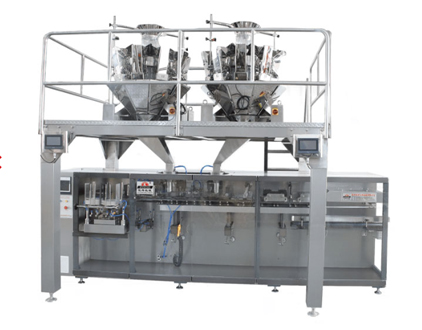In the packaging industry, ensuring the sealing quality of premade pouches by the packing machine is of utmost importance. High - quality sealing not only protects the product inside from external factors such as moisture, air, and contaminants but also extends the product's shelf life and enhances its marketability. Here are several key aspects to consider for achieving excellent sealing quality.

I. Optimize Machine Parameters
♦Temperature Control
The sealing temperature is a critical factor. Different pouch materials have different optimal temperature ranges for sealing. For example, polyethylene (PE) pouches usually require a sealing temperature in the range of 120 - 160°C, while polypropylene (PP) pouches may need a higher temperature, around 160 - 200°C. If the temperature is too low, the seal may not be strong enough, leading to leakage; if it is too high, the pouch material may be damaged, also affecting the sealing quality. Modern packing machines are often equipped with precise temperature - control systems, and operators should regularly calibrate these systems to ensure accurate temperature settings.
♦Sealing Time
The sealing time is closely related to the temperature and the thickness of the pouch material. A longer sealing time may be needed for thicker pouches. Generally, for standard - thickness premade pouches, the sealing time ranges from 0.5 to 2 seconds. If the time is too short, the seal may not be fully formed; if it is too long, it can cause over - heating and damage to the pouch. Operators should adjust the sealing time according to the specific requirements of the pouch and the product.
♦Sealing Pressure
Appropriate sealing pressure ensures that the two sides of the pouch are in close contact during the sealing process. Insufficient pressure may result in incomplete sealing, while excessive pressure can deform the pouch or even puncture it. The pressure setting should be based on the material and structure of the pouch. For soft - plastic pouches, a relatively lower pressure may be sufficient, while for thicker or multi - layer laminated pouches, a higher pressure may be required.
II. Maintain and Inspect Sealing Components
♦Regular Cleaning of Sealing Bars
Sealing bars are the key components for sealing premade pouches. Over time, residues from the product or the pouch material may accumulate on the sealing bars. These residues can affect the heat transfer and the contact between the bars and the pouch, thus reducing the sealing quality. Operators should clean the sealing bars regularly, preferably after each production shift. Mild detergents and soft cleaning tools can be used to avoid scratching the surface of the bars.
♦Inspection and Replacement of Sealing Gaskets
Sealing gaskets play a crucial role in ensuring even pressure distribution during the sealing process. Worn - out or damaged gaskets can lead to uneven sealing and leakage. Regular inspection of the gaskets is necessary, and they should be replaced immediately if any signs of wear, cracking, or deformation are detected.
III. Standardize Operating Procedures
♦Proper Pouch Feeding
Incorrect pouch feeding can cause misalignment during the sealing process. Operators should ensure that the premade pouches are fed into the packing machine in a straight and proper position. This may involve adjusting the pouch - feeding guides and ensuring that the pouches are not wrinkled or twisted before entering the sealing area.
♦Training for Operators
Well - trained operators are essential for ensuring sealing quality. They should be familiar with the operation of the packing machine, including how to adjust parameters, how to handle common problems, and how to perform basic maintenance. Regular training sessions can improve the operators' skills and awareness of quality control.
IV. Select Suitable Packaging Materials
♦Material Compatibility
The packaging material should be compatible with the product and the sealing process. For example, if the product is a liquid with high acidity, the pouch material should have good chemical resistance. Also, the pouch material should be suitable for the sealing method used by the packing machine. Some materials may be more suitable for heat - sealing, while others may require other sealing techniques.
♦Quality of Pouch Material
High - quality pouch materials with consistent thickness and uniform composition are more likely to achieve good sealing results. Low - quality materials may have defects such as thin spots or impurities, which can lead to sealing failures. When selecting pouch materials, it is necessary to source from reliable suppliers and conduct quality inspections before use.
In conclusion, ensuring the sealing quality of premade pouches is essential. For the Premade Pouch Packing Machine, proper machine selection, material control, standardized operations, and continuous monitoring are key. By adhering to these principles, manufacturers can safeguard their products, enhance production efficiency, and gain a competitive edge in the market.
GET A QUOTE